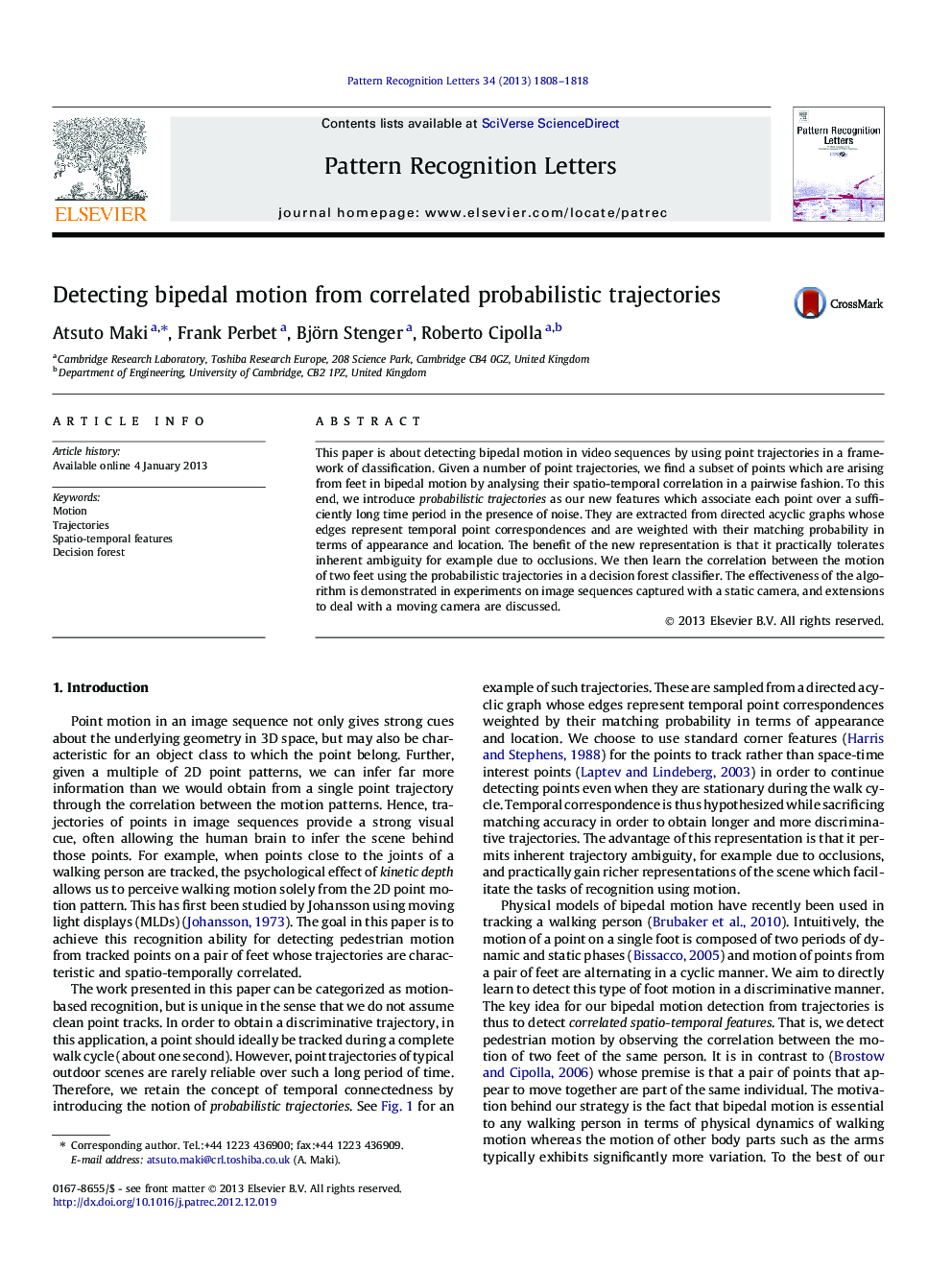| Article ID | Journal | Published Year | Pages | File Type |
|---|---|---|---|---|
| 535546 | Pattern Recognition Letters | 2013 | 11 Pages |
This paper is about detecting bipedal motion in video sequences by using point trajectories in a framework of classification. Given a number of point trajectories, we find a subset of points which are arising from feet in bipedal motion by analysing their spatio-temporal correlation in a pairwise fashion. To this end, we introduce probabilistic trajectories as our new features which associate each point over a sufficiently long time period in the presence of noise. They are extracted from directed acyclic graphs whose edges represent temporal point correspondences and are weighted with their matching probability in terms of appearance and location. The benefit of the new representation is that it practically tolerates inherent ambiguity for example due to occlusions. We then learn the correlation between the motion of two feet using the probabilistic trajectories in a decision forest classifier. The effectiveness of the algorithm is demonstrated in experiments on image sequences captured with a static camera, and extensions to deal with a moving camera are discussed.
► The notion of probabilistic trajectories which associate each point over a certain time period. ► The pairwise analysis of trajectories for detecting correlation between the two feet in walking. ► The design of efficient features which we compute in the two-staged decision forest classifier. ► The discussion on potential extensions to deal with camera motion.
